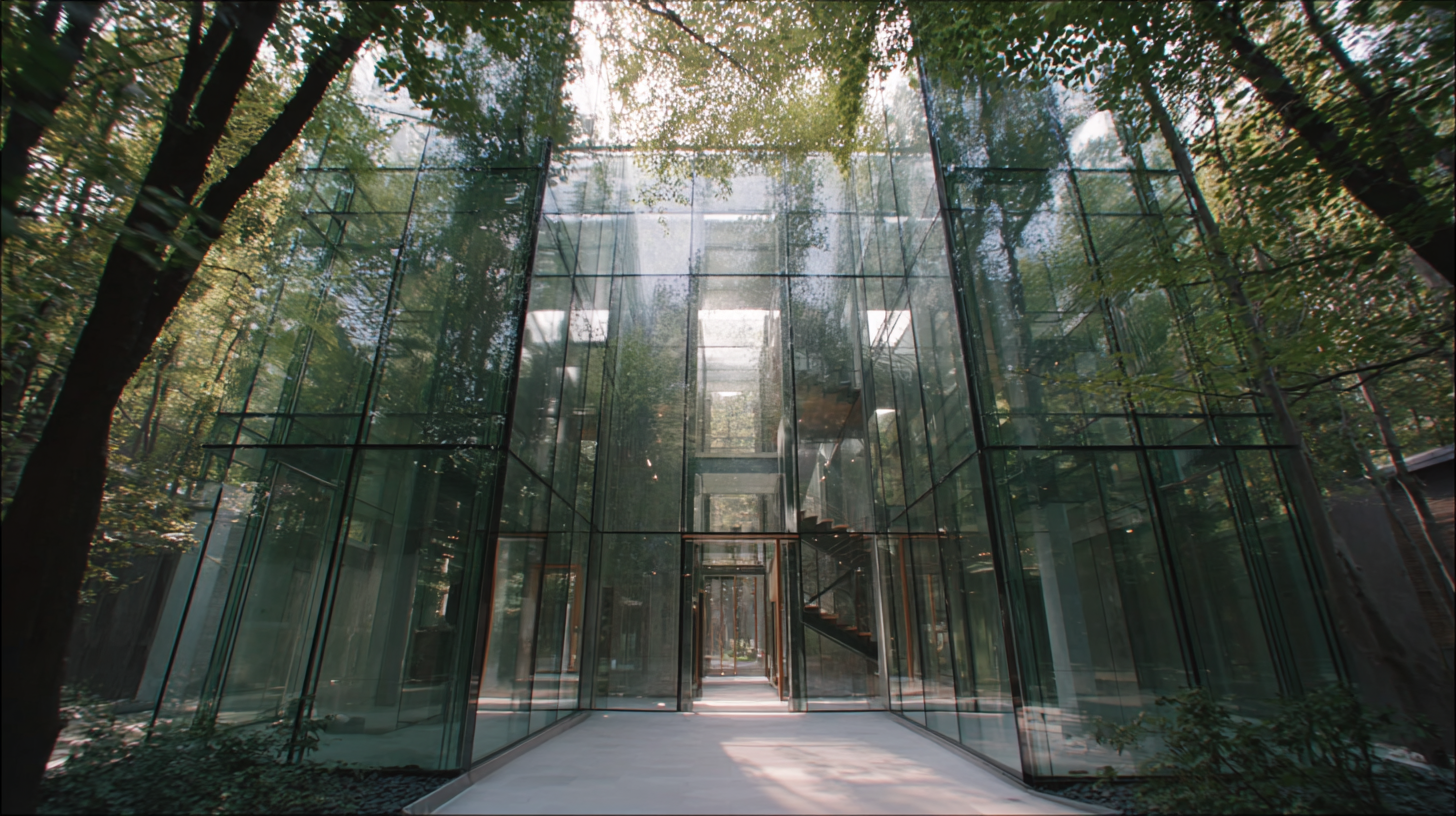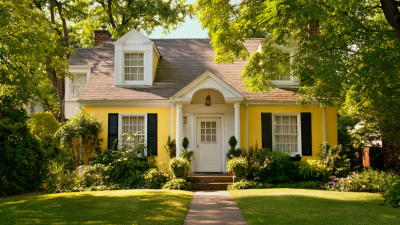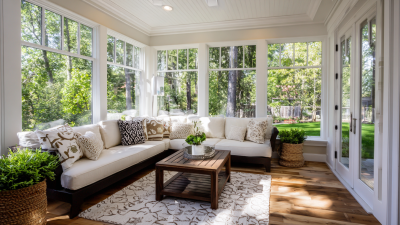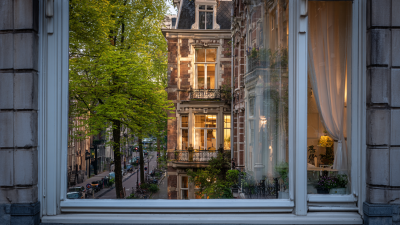In the realm of sustainable architecture, the advent of "all glass" innovations is revolutionizing the design landscape, promising a future where buildings not only harmonize with their environment but also maximize energy efficiency. This exploration delves into the myriad ways all glass structures integrate state-of-the-art technologies, such as energy-efficient glazing, solar control systems, and advanced insulation materials, to create spaces that are both aesthetically striking and environmentally responsible. As architects and designers increasingly embrace all glass in their visions, this trend raises questions about the balance between transparency, light, and energy consumption. By analyzing current trends and showcasing best practices, this discussion aims to illuminate how all glass innovations could define the future of architecture, addressing not only aesthetic desires but also vital ecological considerations in a rapidly urbanizing world.

Innovative glass technologies are at the forefront of revolutionizing energy efficiency in buildings, paving the way for sustainable architecture. Smart glass, for instance, can adjust its transparency according to the sunlight levels, significantly reducing the need for artificial lighting and minimizing heat gain. This dynamic flexibility not only enhances comfort for occupants but also contributes to lower energy consumption, helping to meet stringent building energy codes and sustainability standards.
When exploring glass innovations, consider incorporating low-emissivity (Low-E) coatings in your designs. These coatings reflect infrared light, keeping buildings warmer in the winter and cooler in the summer, thus optimizing energy use. Additionally, integrating photovoltaic glass can transform windows into power generators, allowing buildings to harness solar energy while still maintaining aesthetic appeal.
TIP: Always research local regulations and energy incentives for glass technologies, as many governments offer support for sustainable practices, which can offset initial investment costs. Sustainable design is not only about aesthetics but also functional efficiency, making it crucial to stay updated on the latest advancements in glass innovations to maximize both performance and environmental impact.

Smart glass has emerged as a transformative technology in sustainable architecture, playing a pivotal role in enhancing ambient comfort while significantly reducing energy costs in modern buildings. By utilizing electrochromic or photochromic properties, smart glass adjusts its tint in response to environmental conditions, thus regulating the amount of natural light entering a space. This dynamic control not only minimizes glare but also maintains optimal indoor temperatures, leading to a more comfortable living or working environment.

Moreover, the integration of smart glass can lead to substantial energy savings. Traditional windows often contribute to energy loss due to heat transfer, necessitating increased reliance on heating and cooling systems. In contrast, smart glass can improve insulation by adapting to changes in sunlight exposure, thereby decreasing the energy required for climate control. This innovative approach not only supports energy-efficient building design but also aligns with the growing demand for eco-friendly solutions in construction, contributing to a more sustainable future for architecture. Through these advancements, smart glass is redefining how buildings interact with their environment, promoting both comfort and sustainability.
The integration of transparent solar panels into architectural designs represents a significant leap forward in sustainable building trends. With the global market for transparent solar cells projected to reach $89.88 million by 2032, an impressive compound annual growth rate (CAGR) of 18.40% underscores the growing demand for innovative green technologies. Architects and designers are increasingly embracing these advancements as they seek to harness sunlight without compromising aesthetics or visibility. This technology allows for energy generation directly from windows and other transparent surfaces, helping to create buildings that are not only visually appealing but also self-sufficient in their energy needs.
Emerging practices in eco-friendly architecture are driving a shift in how buildings are conceived and constructed. Innovations such as building-integrated photovoltaics (BIPV) and solar skins are reshaping traditional notions of architectural design. By incorporating these technologies, architects can maximize energy efficiency and sustainability while minimizing the carbon footprint of their projects. In addition to commercial benefits, these advancements are pivotal in addressing global environmental challenges, showcasing a commitment to greener living spaces that resonate with both users and the ecosystem.
The selection of glass in modern construction plays a pivotal role in determining the carbon footprint of buildings. According to the U.S. Green Building Council, buildings contribute to 39% of total carbon emissions, with a significant portion stemming from materials used, including glass. High-performance glazing options, such as triple-pane insulated glass, can reduce energy consumption by up to 30% compared to traditional single-pane glass. This enhanced efficiency not only minimizes energy use but also leads to lower greenhouse gas emissions over the building's lifespan.
Moreover, the type of glass chosen can impact the embodied carbon associated with the manufacturing process. Research from the World Green Building Council indicates that the glass manufacturing process can generate up to 900 kg of CO2 per ton of glass produced. However, advancements in manufacturing technologies, like using recycled materials and energy-efficient methods, can reduce this number considerably.
Utilizing low-emissivity (low-E) glass, which reflects heat while allowing light to penetrate, further supports sustainable practices by reducing the overall energy required for heating and cooling. By prioritizing glass selection in building designs, architects can significantly influence the sustainability and carbon footprint of future constructions.
Biophilic design, which emphasizes the intrinsic connection between nature and architecture, is increasingly vital in creating sustainable buildings. By integrating glass features, architects can illuminate spaces with natural light, promoting well-being and productivity while reducing energy consumption. Transparent wall systems and large windows blur the boundaries between indoor and outdoor environments, allowing the beauty of the surrounding landscape to be a focal point inside the building. This harmony fosters a sense of tranquility and encourages occupants to engage with their environment, highlighting the psychological benefits of nature in urban settings.
Moreover, innovative glass technologies, such as electrochromic and photovoltaic glass, further enhance biophilic elements in architecture. These smart glass systems can adapt to changing light conditions, optimizing energy use while maintaining visual connections to the outside. By strategically incorporating such technologies within biophilic frameworks, future building designs can be both aesthetically appealing and environmentally responsible. This approach will not only meet the needs of occupants but also promote a sustainable ethos in architecture that considers both functionality and ecological impact.
| Innovation | Description | Sustainability Impact | Biophilic Elements |
|---|---|---|---|
| Smart Glass | Dynamic tinting to regulate natural light and heat. | Reduces energy consumption for heating and cooling. | Enhances connection with outdoor light cycles. |
| Solar Glass | Paneled glass that converts sunlight into energy. | Provides renewable energy directly to the building. | Facilitates natural light with solar functionality. |
| Triple Glazing | Three layers of glass for superior insulation. | Minimizes heat loss and enhances energy efficiency. | Promotes a stable indoor climate. |
| Self-Cleaning Glass | Uses hydrophobic and photocatalytic technology. | Reduces the need for water and cleaning chemicals. | Encourages the integration of green elements. |
| Glass Walls | Transparent walls that dissolve boundaries between indoors and outdoors. | Maximizes natural light and reduces artificial lighting needs. | Enhanced visual connection to nature. |





